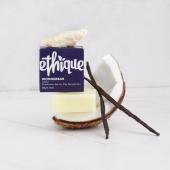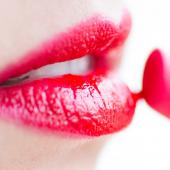What is Greenwashing and How to Protect Yourself
Green beauty is very much coming into vogue, which is super exciting for multiple reasons: It's healthier for our bodies, healthier for our children, and healthier for the environment. (If you aren't familiar with the fact that the cosmetics industry is essentially unregulated, read all about that here.)
Unfortunately, with the rising popularity of "green" beauty comes a surge in marketing aimed solely at getting a cut of those consumer dollars. Baseless or exaggerated claims of healthiness is called "greenwashing," and it's rampant.
Why and how does Greenwashing happen?
Greenwashing happens in large part because of a lack of labeling regulations and a reliance on buzzwords.
For example, did you know that the term "natural" has no legal definition1? That means that all of those labels that say "100% natural" or "all natural" are potentially completely baseless because there's no standard for what that means, and no way to hold people accountable for upholding any perceived standard (again, not that there is one). Plus, you know what else is 100% natural? Arsenic, and you wouldn't put that on your skin, now would you?
Similarly, if you see "organic" on the front of a cosmetics bottle without the USDA certified seal, that's just an unsubstantiated claim made by the brand2. The term "organic" has legal definitions only in regards to USDA Organic, and even that has nuances. On its own, there is no legal definition for "organic" as it pertains to cosmetics. Please note that if you see organic in an ingredients list, that is real (or should be, but cosmetics label accuracy is not really enforced). What I'm talking about here is the title of the product, like "organic deodorant." If the title of the product is "Organic ___" you should see the USDA organic seal. If not, there's nothing legally backing up that claim.
With that said, not every brand who uses these words is lying to you (NTB uses these terms in discussing our products, and we're very much committed to transparency). In fact, because the cosmetics industry doesn't have agreed upon terminology with which to discuss these "green" products, it's pretty much essential to use buzz words. When you, as a consumer, are looking for a greener product, you're naturally going to be looking for terms like "organic," or "natural." As a result, if a company wants to let you know that you can find what you're looking for in our products, we have to use those words. Unfortunately, until the industry has enforceable, agreed upon terms, murky buzz words it is.
So if some companies are lying to you, and others are telling the truth, how can you tell what's greenwashing and what's not?
How to protect yourself against greenwashing
Be your own regulator and read labels. Yes, this part is a bit overwhelming, but it's the only way. Plus, there's no gold standard by which something is judged as good-for-you or not; I like to say there is a "spectrum of green," and we each have to choose the level of risk/greenness that we're comfortable with. The only way to know where you fall on that spectrum is to know your ingredients and to choose which ones you're comfortable with and which ones you're not.
The Environmental Working Group, or EWG, has an excellent database called Skin Deep where you can search products (we'll be there soon!) and ingredients. Stick with products that show up with green numbers. These are the healthiest.
A trick for fast label evaluations is to skip to the bottom of the ingredients list. If you see any sort of paraben (e.g. methylparaben or propylparaben), just say no. If you see "fragrance," which can hide lots of nasty things like hormone disrupting phthalates, just say no. There are many other ingredients we can add to the list of automatic DQs, but these two are an easy and helpful place to start. As far as "fragrance" goes, you might see an asterisk that says something like "naturally derived." Perhaps this means that there isn't icky stuff in it, but there's no guarantee. "Fragrance" is protected as a "trade secret," which means the individual components do not need to be disclosed3. For me, this is an automatic "no," esepecially because (as previousy discussed) "natural" carries no guarantee of goodness.
Another tool I like to use is to see if the brand is using the proper INCI labeling names. Have you ever noticed that labels have Latin and English? That's because you're legally supposed to list your ingredients by their official name, and then you may also use the common name for clarity. If a label reads "aloe, sunflower oil" instead of "Aloe Barbadensis Leaf, Helianthus Annuus (Sunflower) Seed Oil," put down the bottle and try another. I like this rule because it tells me how serious the company is about following the existing labeling regulations and its overall dedication to transparency. This isn't to say that people who don't follow the rules are lying to you, I just like to see attention to detail when it comes to labeling because labeling is so important. How else can we make informed decisions?
Perhaps the most obvious option is to choose products that have simple labels with ingredients that you recognize. No extra research needed! Phew! This is the guiding principle behind the formulations of Naked Truth Beauty products – I never want you to take our word for it that it's good for you, and I want it to be as easy as possible to make healthy choices!
Finally, you can find brands you trust (hopefully like this one!) that are dedicated to ingredients transparency. I don't love the notion of taking a brand's word at face value (that's why our ingredients list is so simple), but I acknowledge that it's very time consuming to find healthy products. So, if you find a brand you love that consistently has good, clean products, stick with that brand and support them!
Ultimately, the most important thing to remember is that you are your best regulator. The more you know, the better choices you can make. Have questions? Leave a comment!
-
U.S. Food and Drug Administration. Small business & homemade cosmetics: fact sheet. U.S. Department of Health and Human Services. https://www.fda.gov/Cosmetics/ResourcesForYou/Industry/ucm388736.htm#7
-
U.S. Food and Drug Administration. "Organic" cosmetics. U.S. Department of Health and Human Services. https://www.fda.gov/Cosmetics/Labeling/Claims/ucm203078.htm
-
U.S. Food and Drug Administration. Cosmetic Ingredient Labeling. U.S. Department of Health and Human Services. https://www.fda.gov/Cosmetics/Labeling/Regulations/ucm126444.htm#clgl4




